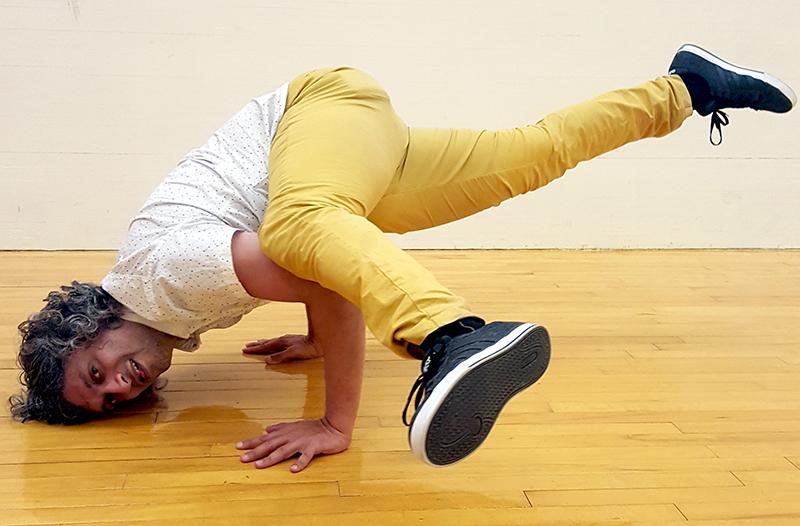In the Locker Room with Kazim Ali
Kazim Ali
March 4, 2016
This week, the Review sat down with yoga instructor and Creative Writing Professor Kazim Ali to discuss the mental and physical benefits of yoga, the yoga scene at Oberlin and why yoga is important for athletes to practice.
For people who are unfamiliar with yoga, can you summarize what it is?
It’s a whole set of practices that draw from ancient Indian philosophy, [which] is almost 2,000 years old now. It is a set of practices, whether they be meditative, devotion[al] or karma yoga; for example, the act of doing something like feeding the poor. What most people in America think of as yoga is the physical stuff. All of those physical postures are designed to channel energy through the body; they’re designed to train the mind. They’re designed to train the body for meditation and designed to train the mind toward focus on the true nature of reality. Most people think of it as a set of physical practices. I think most people recognize that yoga is not merely gymnastics, that it is a meditative practice. Now you see this total explosion of the popularity of yoga — I personally believe that is due to people [ from] the west who are hungry for that spiritual component.
Who is yoga most beneficial for?
Everyone uses it for different things, and it is personal to each body. In India, when the teachers would meet with you, they would meet with you individually and figure out what you need from yoga. If you were a 13-year-old boy, the teacher might develop a program that’s very athletic and strong. If you were an older person, or someone who was stiff in certain ways, then they would design a different yoga practice for you to engage in. That’s why there are so many different kinds of yoga and so many classes. The idea is that each person will find what they really need out of yoga. Overall, it can be a benefit to anybody.
What is your favorite part about teaching yoga at Oberlin?
It’s pretty wonderful. The community of students, faculty and staff that come to the classes [is] very devoted. They all come for different reasons. They allow me to be a part of their growth, and that is very special for me. That is the greatest reward from it.
Many people associate yoga with stretching. Can you talk about how yoga is different than stretching?
It’s about learning your own limitations. It’s about strength and breath. It’s about deepening the breath and focusing the mind. It about doing things you did not think you would have [previously] been able to do.
Why do you think so many professional athletes have started to do yoga in the summer to help them recover from their past season and help them get ready for their upcoming season?
It does make you more limber. Injuries come from tightness. If you’re really pliant and you don’t have strength, you can injure yourself quite easily. I think once athletes who depend primarily on strength are introduced to yoga, they will be much more successful at whatever they are doing. I could see this when I watched the Seattle Seahawks play in the Super Bowl. They just looked so loose when they were moving around.
What would you say to someone who is interested in trying yoga for the first time?
It’s a very welcoming culture. Every yoga teacher I know is really happy to have a new person in the room. You don’t have to be shy or self-conscious about it. Yoga is different every day for every person. Try a few classes and see who you connect with as a teacher. All teachers have different approaches, so check out different classes. Some people like doing it six days a week, and other people like doing it once in a while.
What is your favorite yoga position?
I like to challenge myself. I really like the arm balances the most, like the crow poses or handstands. They are challenging in balance and strength, and they require complete concentration to do them.
What is the most difficult yoga position you can perform?
I can do a pose called Mayurasana. It is a peacock pose. The arms are under the body, the palms are on the ground and the body is planked out. The reason I enjoy it is because you cannot balance unless the full body is open. You have to activate your strength while at the same time releasing and keeping the heart open.





















